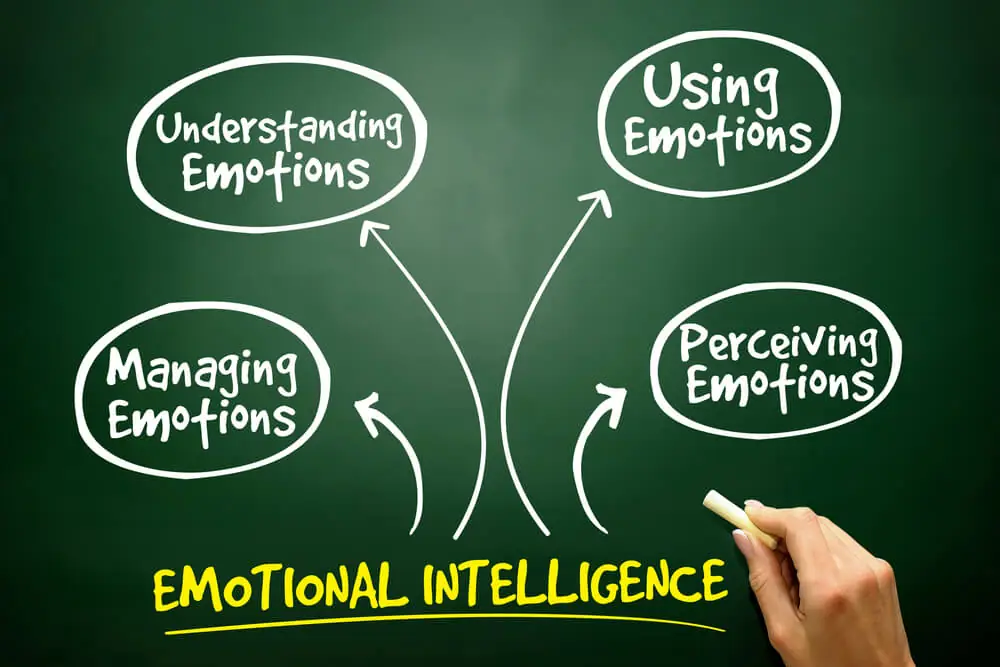When it comes to creating a headline, first impressions matter. An impactful headline has more rewards than simply increasing your article’s hits or shares; it can be designed to shape the reader’s thoughts, feelings and opinions of your piece. Traditionally, headlines were used to highlight the relevance of a story and to summarize its content but the oversaturated market for news and media have since changed a headline’s purpose. Today’s media increasingly demands a more aggressive and meticulously crafted headline in order to capture a reader’s attention.
There is a certain methodology when it comes to writing the perfect headline. We’ve summarized seven areas that help to drive the social transmission of information and will aid you in creating a headline that is clickable, shareable and emotionally engaging.

- Harness arousing emotions.
Inducing a strong emotional reaction from your reader is the best way to attract attention and will make your headline more clickable and shareable. Researchers from the University of Pennsylvaniaanalyzed roughly 7,000 New York Times articles and used a sentiment analysis to determine the emotional characteristics of the most shared articles. Articles that aroused high levels of emotions, like awe or anger, were more likely to go viral than articles that evoked low arousal emotions like sadness.
Similarly, a group of international researchersused sentiment analysis to decipher the polarity and intensity of the emotional content in almost 70,000 headlines in the area of computer science. Researchers pulled headlines from four major global media organizations over an 8-month time frame in 2014 and found that the greater the magnitude of emotional sentiment in the news articles, the more clicks the headlines generated. Specifically, extremely positive and extremely negative sentiment values were attributed to the most popular news articles. On the other hand, headlines that remained neutral and lacked any sentiment were found to be less popular and were not very effective.
- Find the Appropriate Emotional Tone
Deciding which emotion to evoke with your headline is a bit of a nuanced question. You’ll need to figure out who your intended audience is and what you want them to feel when they read your content. Several empirical studies have found that the emotional tone of your headline can influence how much publicity your article generates as well as how fast and far it spreads across social media.
For instance, a quantitative analysis of over 4 million twitter shares (tweets) suggests that negative messages are re-posted faster and more often than positive or neutral messages. Even though the tweet might be negative, we can guess that it is shared faster because it evokes a very strong emotion in the reader.
One research team examined two weeks worth of over 13,000 Yahoo! articles from news providers (like Associated Press and Reuters) and found that web users were drawn to highly sentimental news articles that were characterized by overall negative content. Additionally, content that was negatively sentimental was related to higher levels of reader enjoyment and curiosity to know more about that content.
While negative headlines are shared more frequently than positive headlines, it’s important to remember that viral negative content won’t last forever. Researchers at Cornell University believe that these negative articles are likely to fade more quickly than emotionally positive articles after examining the decay rate of URLs embedded in negative tweets. A healthy mix of positive and negative content can help boost your visibility while ensuring your content lasts.
- Your Headline Should Appeal to Your Audience
A critical step towards mobilizing the appropriate audience to engage with your message is by optimizing the relevancy of your headline to your target reader. Marketing researchers have found carefully crafted headlines that included target-group-specific content created for a particular audience significantly outperformed headlines that were less target-specific, like in a direct mail campaign.
Other research suggests that in order to maximize the emotional impact of your headline, a message must resonate with the interests of your audience in order to completely engage their emotional responses. Utilizing eye-tracking methodologies, researchers found that readers exhibited higher levels of focused attention and reported feeling more positively after reading articles that matched their interests.
For best results, call out your target audience directly in the headline. It will make your reader feel like you are speaking to them directly and readers who resonate with your headline are more likely to read your content.
- Headlines Should be Contextually Rich and Informative
Traditionally we’ve been taught that headlines should be short and sweet but this is no longer the case. Recent research suggests that longer headlines work better than shorter headlines when multiple articles containing similar information are competing for attention.
Don’t just take our word for it though. Researchers at Nielsen Neuro have measured electrical brain responses to varying headlines, combining neuroscience with computer aided text-analysis. The goal was to determine which words were related to increased levels of mental engagement with different headlines, the rationale being that the more mentally engaging a headline is the more impactful it will be. Nielsen researchers ended up with a list of 1,072 “context words” that would force individuals to connect the meaning of a headline to its context. These context words could reference time (i.e. abrupt, today, now), insight (i.e. admit, idea, secret), motion (i.e. act, climb, journey) or space (i.e. away, outside).
Ultimately, researchers found that the more context words you include in your headline the more successful your headline will be. When writers crafted headlines with context words, readers were more fully engaged and found headlines to be more informative.
- Shape Opinions But Don’t Mislead the Reader
Headlines are a great opportunity to influence the thoughts, feelings and opinions of your reader in addition to providing information about your content. By including certain details or facts in your headline, you can begin to influence the existing knowledge that is activated in a reader’s brain as they click on your article, shaping their expectations and how to perceive the content. Empirical research confirms that strategically phrased headlines can influence how readers perceive and later remember the details of an article. Once a headline has shaped the reader’s initial impressions, they’re unlikely to change those impression even if the message in the article contradicts the headline.
It’s important to note that while headlines have huge potential for shaping your reader’s opinions, be careful not to mislead your readers. Further research found that participants were able to detect factual news stories with misleading or incongruent headlines. A misleading headline that’s detected by your reader could prevent the formulation of trust between you and your audience.
- Curiosity is Key
Curiosity is peaked when a lack of knowledge leads to a desire to fill the gap in information and it’s also what will encourage your reader to click on your article. Research suggests that using your headline to introduce curiosity will motivate your audience to read your article in order to fill that gap of missing information. For instance, an international team of marketing researchers discovered that advertisements that induced curiosity generated more interest and motivated more learning in comparison to ads that contained only product information.
The more knowledgeable your reader is the more curious they will be regarding a perceived lack of information on a topic they find relevant and interesting. Remember tip #3 in our list! Maximizing the effect of a headline that teases information around your target reader’s interests will arouse their curiosity to know more.
Another way to introduce anticipation and clickable-curiosity into your headlines is by incorporating a “forward-reference”. Forward references don’t reveal the subject of your content in the headline but still encourages your reader to seek out the entire article. We typically see these types of headlines used in tabloids but writers have been incorporating them more and more in non-entertainment news sources.
- Asking a Question as Your Headline
While some writers are hesitant to use questions as part of your headline, we say go for it! Results from several experiments indicate that headlines containing questions generate greater online readership compared to purely declarative headlines. In a follow up study, researchers found that headlines including questions containing a self-referential cue (i.e., “you”) were even more effective than headlines that were vague questions with no cue. Although this research is among the first to empirically test the effectiveness of headline questions, the practice has been common in print advertising for over 100 years.
Asking a question to your reader invites them into your piece and speaks to them directly. Similar to what we mentioned in tip #3, you want your headline to match your audience and a question encourages readers to feel a part of the conversation.
Still not sure how to craft the perfect headline? We like to think that we covered the essential tips but in case you’re looking for more tricks to catching your audience’s attention we’ve got a list of some top blogs that will help you optimize your blog:
- 10 bitchin’ tips for writing an irresistible headline
- How to Write an Irresistible Headline
- 51 Quick Hacks That Will Make You Write Attractive Headlines
- 5 Irresistible Headline Writing Strategies to Live and Breathe By
- 3 Tips for Writing Irresistible Headlines (That Your Harvard Professor Won’t Tell You)
- How to Double Your Traffic Overnight by Writing Irresistible Headlines
- How to Write Headlines so Irresistible That Big Money Clients are Begging You to Write for Them
- 7 Sneaky Ways to Write Irresistible Headlines
- 15-Minute Formula for Writing Irresistible Headlines
Remember, your headline is the first thing a reader will see and a great first impression can make or break your piece. Try incorporating questions or using the power of emotions to appeal to your audience and watch your readership grow.




